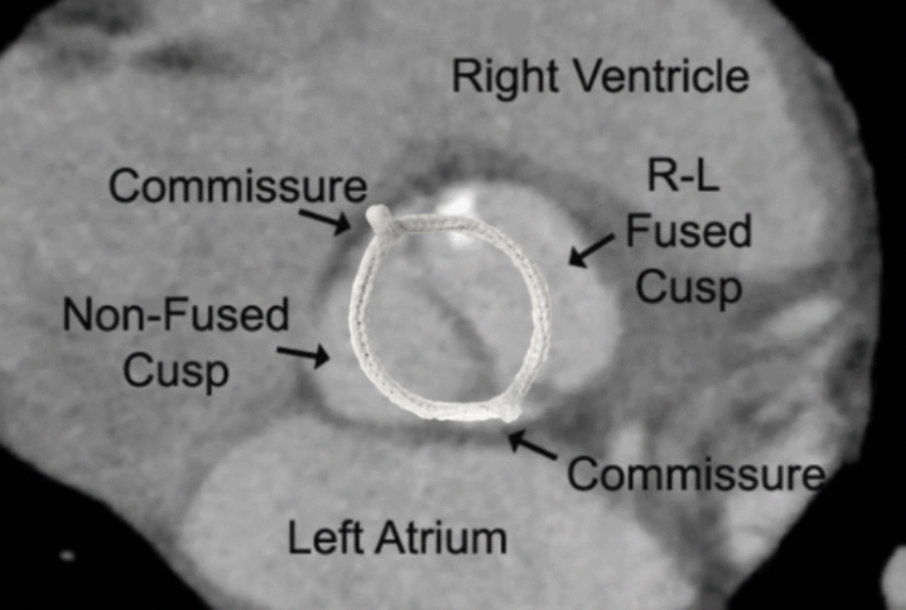HAARTbeat Article
HAART 200 Design Rationale
Simplifying BAV Repair with Three-Dimensional Annuloplasty
In the inaugural issue of HAARTbeat, we explained how the HAART 300 device was developed from CT angiography studies of normal aortic valves and is designed to create normal three-dimensional annular shape based on leaflet sizing. In BAV disease, there is no such thing as “normal” annular shape and the presentation of the anatomy can be highly variable.

Notice in the left image that the BAV annulus dilates in the sinus-to-sinus direction which drags the leaflets out of coaptation. It’s also important to note in the Modified Sievers Classification, that 88% of BAV are Type 1, with a cleft in the free edge of the fused leaflet and an angle between the commissures of ~140° instead of 180° as with the Type 0 BAV. The design challenge for the HAART 200 was to produce a device with the best shape for reducing and stabilizing the annular dimensions for all classifications while facilitating and simplifying leaflet reconstruction.
To address this complex geometric problem, the HAART 200 was designed with a circular base geometry and two subcommissural posts spaced 180° apart around the circumference. As shown in the image below, this shape has several distinct advantages and dramatically simplifies BAV repair.
Key advantages the HAART 200 design
- Circular shape reduces the sinus-to-sinus dimension to pull leaflets into the midline for improved coaptation.
- Subcommissural posts create a 180° commissure orientation for simplifying leaflet reconstruction and creating central transvalvular flow.
- Creates straight line coaptation between leaflets
- Reconstruction = equalizing lengths and heights of the two parallel leaflet free edges
- Enables identification and closure of the fused leaflet cleft
- Sizing is standardized and based on the non-fused leaflet (Diameter = Leaflet free-edge length/1.8).
- Internal annuloplasty avoids root dissection and coronary reimplantation and facilitates selective sinus replacement. These features are very valuable since most BAV patients have normal sinus dimensions, making a David procedure unnecessary and controversial.

The HAART 200 Aortic Annuloplasty Device is a significant advance in the treatment options available for patients with BAV insufficiency.
Check out Dr. Scott Rankin’s EACTS presentation featuring three BAV cases that demonstrate the functionality of the H200 and the predictability it brings to bicuspid valve repair.

HAART 200 Aortic Annuloplasty Device
Key messages
- HAART 200 is round to recruit leaflet tissue to the midline and restore valve competence
- HAART 200 has 180° commissure orientation to simplify leaflet reconstruction
- HAART 200 is the only device or annuloplasty method that reduces the number of steps required for a successful BAV repair
About BioStable Science & Engineering
BioStable Science & Engineering is a cardiovascular device company focused on developing and commercializing proprietary valve repair technologies that provide an alternative to valve replacement for patients with aortic valve disease. The company’s HAART Aortic Repair Technologies are designed to simplify and standardize aortic valve repair, enabling surgeons to offer the recognized clinical benefits of valve repair to patients undergoing surgical correction of aortic insufficiency or aortic root aneurysm.
Please contact us for more information.
